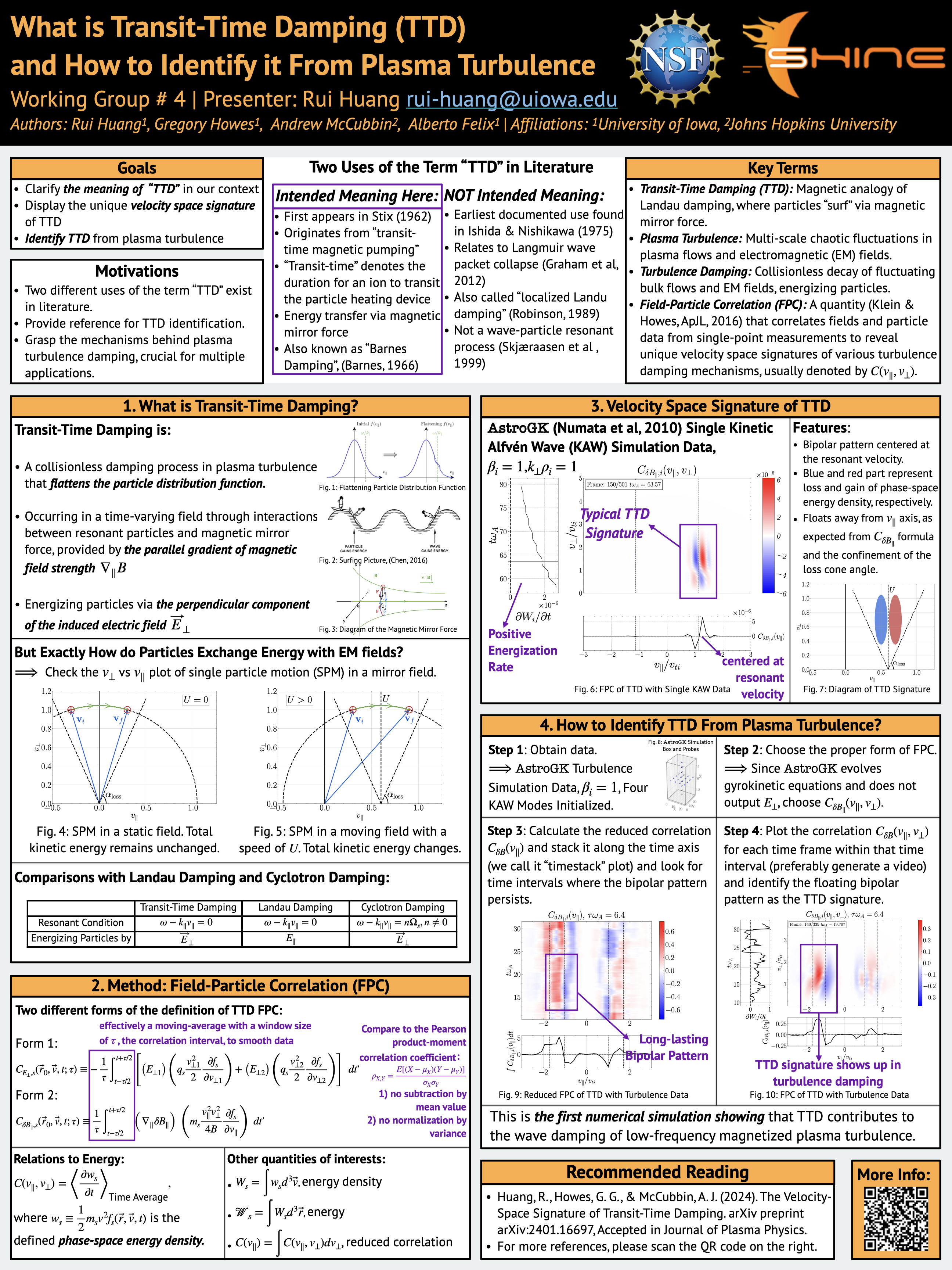Authors: Rui Huang (Department of Physics and Astronomy, University of Iowa), Gregory G. Howes (Department of Physics and Astronomy, University of Iowa), Andrew J. McCubbin (Applied Physics Laboratory, Johns Hopkins University), Alberto A. Felix (Department of Physics and Astronomy, University of Iowa)
The term “Transit-Time Damping” has been defined variably across different fields of plasma physics. In the context of low-frequency magnetized plasma turbulence, known as the magnetic analogue of Landau damping, transit-time damping describes a process in a time-varying magnetic field where the magnetic mirror force—arising from the parallel gradient of magnetic field magnitude—interacts with resonant plasma particles. This interaction results in the collisionless damping of electromagnetic waves and energizes the particles via the perpendicular component of the induced electric field. In this study, we achieve two main objectives: 1) constructing a model of single particle motion in a slowly-varying magnetic mirror field and employing multiple-scale analysis to show the physics of energization; 2) utilizing the field-particle correlation technique to discover the unique velocity-space signature of transit-time damping and presenting examples of its identification from plasma turbulence simulation data.


